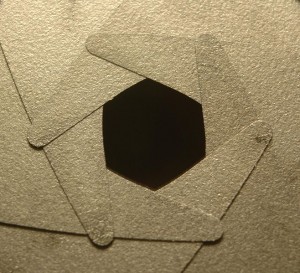
One-point-four, two, two-point-eight, four, five-point-six, eight, eleven, sixteen, twenty-two… any guesses as to what these numbers have in common? Yup, they are the represented numbers for aperture values or “f-stops†on camera lenses and telescope lenses. I’m not going to spend much if any time explaining where these numbers come from and what they mean. For that I would recommend checking out Wikipedia’s article on aperture to get you started and then if you really want to nerd out follow the source links at the bottom. The best way to think about aperture, as you may have heard many times, is to think about it like the iris of your eye. It is a diaphragm and its function is to expand and constrict allowing different amounts of light in depending on the amount of light that is available.
Every camera has an aperture. Some cannot be changed (disposable cameras for instance) and others can have broad range from f/8 to f/64 (large format camera with bellows)! For the ones that cannot be changed, basically it’s just a hole. The aperture mechanisms that can be adjusted do vary a little bit from type, model and manufacturer in how they work but most take the same basic form. And that form is what is called an iris diaphragm that utilizes a series of connected blades. More blades render a more circular iris opening; “roundness†is also improved by curving the blades slightly. There are even some cameras that use only two blades which form a square opening. This is useful to know because the shape of that has changes the appearance of the blurred out-of-focus parts of your pictures referred to as bokeh. There are even third-party accessories that allow you to take advantage of that by changing it to a star, a heart or any simple shape.

Looking at the above animation, you can see how simple the mechanics of the iris diaphragm works. On your point-&-shoot models the aperture and shutter is pretty much the same unit in that they are separate mechanisms on the same part (check out our video on how shutter works to see that unit). What makes these things go wrong is in line with how most things on cameras break. They can wear out like anything mechanical. They can get dirt or debris built up and can gum it up (though it’s labor intensive sometimes it can be cleaned and work just fine). Liquid and oils can make the blades slow or sticky. Of course physical trauma is the most common cause of camera damage.